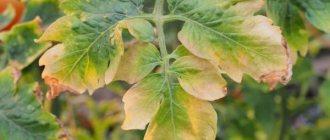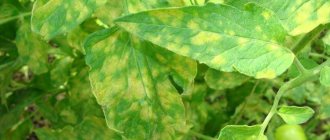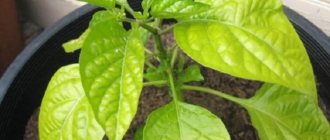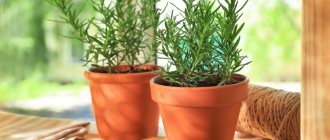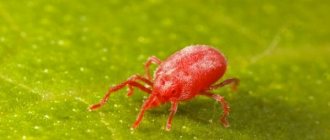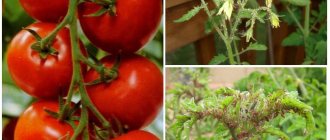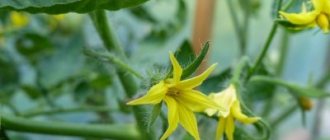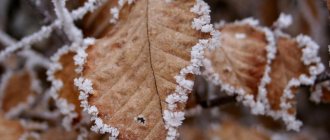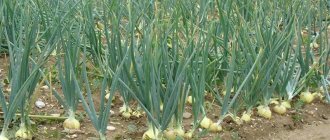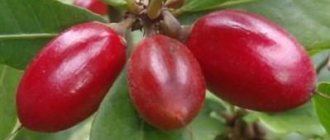Gardening » Apple tree
0
607
Article rating
Kira Stoletova
Drying of apple trees is one of the main problems gardeners face. This leads to significant crop losses and tree death. Let's figure out why the branches of an apple tree dry out and how to revive a sick plant.
Reasons for drying out of branches and leaves on an apple tree
Why do the leaves of the apple tree dry out?
The reasons for starting to dry leaves can be very diverse. The main ones are:
- insufficient lighting and, as a result, impaired photosynthesis;
- lack of moisture;
- an excess of organic fertilizers (unrotted manure), which provokes burns of the roots and incorrect functioning of the absorption system;
- mechanical damage to branches or roots;
- pest attack;
- infection with various diseases.
Analyze the latest agricultural practices, inspect the place where the tree was planted, check for the presence of any of the listed factors, and you will find the essence of the problem.
Diseases and pests
Various diseases of fruit trees caused by pathogenic fungi can cause the leaves on the apple tree to dry out uncontrollably. Thus, with infectious cytosporosis, dark ulcers begin to appear on the trunk and branches, which quickly spread throughout the tree. If they penetrate inside the wood, then normal sap flow is disrupted, as a result of which the green mass dries out.
When scab occurs, the fruits and leaves become covered with dry brown spots. Powdery mildew produces a characteristic gray or white coating that darkens over time. On a tree suffering from bacteriosis, the leaves darken and dry out, but do not fall to the ground. In this case, wet spots form on the bark.
One of the most common apple tree pests, the spider mite, draws nutritious juices from the greens and spins a web on the remaining cuttings. Because of aphids, the leaves of the apple tree dry out and curl, after which they move to young shoots.
Scab
This is a common fungal disease that causes leaves to quickly turn black and dry out. Soon the dried leaves fall off, the trees dry out and die. Determining the presence of scab on an apple tree is not difficult.
Already at the end of spring, brown and black oily spots may appear on young leaves, which quickly increase in size, the leaves soon dry out and fall off the apple tree. There can be many reasons for the appearance of scab. The fungus prefers moist, warm weather, so if the tree is too dense, the first foci of the disease may appear.
The fight against scab consists of high-quality care of apple trees, compliance with all rules of agricultural technology and regular spraying of apple trees with appropriate fungicides with copper.
The best remedy is copper sulfate, which not only fights the fungal pathogens of this disease, but also destroys various insect pests.
To prepare such a solution, you need to dissolve 200 grams of copper sulfate in a bucket of water and use about two liters of the prepared product to treat one tree. It is recommended to carry out several treatments of the apple tree with a break of 10-14 days.
There are few leaves on the apple tree and the branches are drying
With the onset of spring, apple tree branches become covered with fragrant flowers, and then with lush greenery. If, with the onset of warmth, a small amount of leaf mass opened on the tree, and by summer it began to fall off altogether, then the reason should be sought in the unsuccessful wintering of the plants.
Upon closer inspection, the damage caused to the branches by frost becomes noticeable. Bent shoots break very easily.
To alleviate the consequences of harmful wintering, you must do the following:
- Replenish nutrient balance by applying fertilizer after harvest.
- Spray the wood around the standard circle generously.
Weak trees suffer from excessive production of gum, which clogs the sap flow.
For apple trees that are not prepared for wintering, the nutrients remaining from the previous season are only enough to open a small part of the foliage. A catastrophic lack of microelements leads to drying of the green mass.
Sudden joint drying of branches and leaves
The main reason for this problem is usually the very close location of groundwater.
Young apple trees cannot suffer from this phenomenon, since their root system is still very close to the surface and receives sufficient oxygen. Typical age-related changes lead to the growth of roots, their deepening into moist soil and rotting. Nutrients can no longer be efficiently delivered to the branches and foliage, which leads to their drying out. Sometimes degradation processes can begin on only one side of the tree. But in any case, they will gradually spread to the entire plant, leading to its death.
The same drying out can occur as a result of a long spring flood and a prolonged rainy season.
If the apple tree dries up, how to save it?
- If the reason is the proximity of groundwater , then nothing can be corrected except to maintain the small size of the tree.
- If the reason is soil depletion , then the constant addition of large doses of organic compounds and mineral salts will correct the situation.
- And if soil pests and diseases have settled on the roots, then introducing special poisons into the soil will help. But they must be used with an understanding of the correct dosages and adherence to technology!
- If dryness occurs after a frosty winter , then the dried branches need to be cut out. And spray the crown with a solution with heteroauxin (according to the instructions). This will speed up wound healing and improve the growth of new shoots.
Aphids on an apple tree.
But if young branches begin to dry out at the tips in summer and are heavily covered with aphids , then they must either be removed completely or treated tincture .
Advice! Without accurately identifying the problem, do not use fungicides and insect poisons in vain!
Young apple trees
To prevent a young apple tree from drying out, it is advised to first check its planting site: does it have a negative effect on root growth? Then the young apple tree will need to be transplanted to a new place suitable for its normal further growth.
The presence of parasites on the roots or the presence of fungal infections also provokes drying out, so you must immediately carefully examine the apple tree in order to correctly determine the culprit of the drying. And only then fight this reason.
Dwarf apple tree.
For diseases, and specifically scab, the following remedies are good (for young apple trees):
- Copper sulfate + calcium hydroxide;
- Trifloxystrobin;
- Difenoconazole + ½ flutriafol.
For bark beetles and other corrosive insects, you should use the following medications strictly according to the instructions:
- Aversectin S;
- Pyriproxyfen;
- Malathion.
If the leaves dry on young apple trees
When planting apple seedlings, follow all the subtleties of agrotechnical measures. This will help avoid problems in the development of green mass of trees in the future. Places unsuitable for young plants:
- Close location (less than 3 m) of other mature trees with a developed crown and powerful root system.
- Lack of sufficient sunlight, oppression of the tree.
- High groundwater level.
- Places that flood during rainstorms.
In addition to an unsuitable site, the following reasons can cause the leaves of seedlings to dry out:
- excessive deepening of the grafting site (below 8 cm);
- excess fertilizer;
- fertilizing with manure that has not undergone the process of overheating;
- lack of watering in summer;
- planting after the start of sap flow.
Subtleties of determining causes
Correct and timely diagnosis will bring you 50% closer to a successful outcome during tree treatment. To determine the essence of the problem, take into account:
- depth of groundwater;
- soil condition;
- timing of the last application of fertilizers;
- soil salinity;
- the effectiveness of leaving the winter quarters;
- the appearance of signs of diseases characteristic of this type of fruit plant.
Without considering the above factors, it is not possible to determine the exact cause of apple tree drying out. There are 3 main global sources of the problem:
- negative influence of weather conditions;
- attack by pests of cambium and tree bark;
- infection with fungal diseases.
Control measures
After identifying the reason why apple tree leaves dry and turn brown, you should immediately take measures to eliminate it.
A tree located in an unsuitable area must be replanted, and the damaged parts must be removed from frost damage. Don't forget about regular summer watering and mulching. If the leaves dry out due to diseases or pests, spray the tree with pesticides and additionally apply nutritious fertilizers. If serious, incurable diseases are detected, remove the affected parts of the apple tree, clearing the tree back to healthy wood. The sooner measures are taken to eliminate the cause of leaf drying, the greater the chance of saving the tree.
Apple tree diseases that lead to drying out
Black cancer is a very dangerous disease of fruit trees, especially apple and pear trees.
The causative agent of the disease is the fungus Sphaeropsis malorum that affects leaves, fruits, trunk bark and skeletal branches. The most dangerous form is bark disease, as a result of which affected trees produce a reduced yield. The disease black cancer is usually observed in areas with sharp temperature fluctuations in the spring, for example, in the Middle and Lower Volga region, Kuban, and Crimea.
Control measures
There are several options:
- cut down the affected branches;
- fill up hollows;
- destroy all rotten apples;
- clean sore spots;
- Constantly check the condition of the trunk and cuts.
Correct cutting is done with a sharp tool. It is also necessary to capture healthy wood by about 1-2 cm, thus reducing the likelihood of relapse. Then the cut is treated with 2-3% copper sulfate for disinfection and covered with putty, paint or garden varnish.
Many experienced gardeners recommend this composition: 1 part clay and 2 parts mullein are mixed with water until it becomes creamy, and a fungicide is added. All blackened areas are covered with the mixture.
Even if the disease was detected in a timely manner and control measures gave good results, even from a cured apple tree there is no need to graft cuttings, since the disease can manifest itself over time.
Cytospora blight is caused by the imperfect fungus Cytospora leucostoma (Pers) Sacc. and Cytospora cineta. Of the stone fruits, apricot and peach are most affected. Apple and pear trees are affected by Cytospora carphosperma Fr. and Cytospora copitata Sacc et Schnalz.
Control measures
Sanitary, preventive and agrotechnical measures aimed at increasing the resistance of plants to cytosporosis (as well as against cytosporosis of apple and pear trees), growing disease-resistant and winter-hardy varieties, planting on soils suitable for the species, protection from sun and sun-frost burns, from bacterial cancer, moniliosis and clasterosporiosis, verticillium wilt, pests; timely covering of wounds during pruning, application of fertilizers in calculated doses, timely watering, destruction of weeds.
Correct and timely formation of crowns, as well as their pruning. Removal from the garden and destruction (before autumn) of all branches and trees that died from cytosporosis. Preventive protective spraying in spring (before the beginning of the growing season) and autumn (during leaf fall or immediately after leaf fall) with 3% Bordeaux mixture.
Moniliosis.
Reasons for drying out in different months
The reasons for drying out foliage may vary depending on the month in which the problem was identified.
In June
The most likely reason for the drying of green mass in June is the wetting of the roots during floods, freezing of the plant in winter, or an excess of seasonal fertilizing. Damage to the bark by small rodents may also be the cause. The lack of additional nutrition shows a problem at the very beginning of the summer season.
In August
If the leaves on the fruit tree begin to deteriorate towards the end of summer, then the likely causes would be logical to identify a lack of fluid, lack of nutrition, infection by pathogenic fungi, or an attack by insect pests. At the same time, the leaves lose turgor and droop. The tips of young shoots deteriorate first.
Damage to a tree by pests and diseases can be detected by careful inspection.
Prevention
To prevent the apple tree from drying out, it is necessary to carry out a number of simple preventive measures:
- provide good protection against freezing in winter;
- create a drainage system when planting;
- observe the planting dates - in spring (late April or early May) or autumn (early September);
- regularly feed the garden with fertilizers;
- in spring and autumn, treat with antifungal drugs and effective anti-parasitic agents;
- trim the crown correctly and on time.
Some nuances of the problem
In some cases, you can quickly figure out the reasons for the appearance of dry leaves of a particular part of the tree.
The upper leaves dry out
This phenomenon is usually caused by insufficient watering in hot weather or damage to the root system. You should also inspect the plant for spider mite damage.
The edges of the leaves dry out
The two most likely reasons:
- infection with bacteriosis;
- excessively wet soil.
Leaves dry out and change color
Blackening of the green mass usually accompanies tree infection with cytosporosis, scab or bacteriosis. This can also happen in May with a sudden return of night frosts.
A lack of nitrogen in the soil immediately affects the process of photosynthesis, which, in turn, causes yellowing of the foliage. But drying and falling off is not necessary in this case. Another reason could be lack of watering.
Pale leaves on an apple tree indicate that the tree is infected with powdery mildew or milky sheen.
